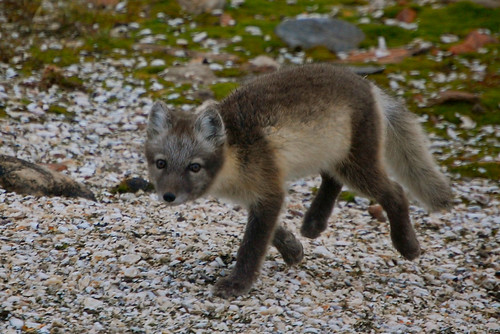The animals of the Arctic Tundra have adapted to bear through the harsh long winters.
- breed and raise young quickly
- ave an extra layer of fat for insulation
- hibernation when food is not abundant
- reptiles and amphibians are rare because of cold temperatures
- constant emigration and immigration
Genus: Mustela
Species: erminea

Snowy Owl: their eyes take up more space in their skull than their brains. Their hearing is so sensitive that they can hear vole and lemmings deep beneath the snow. The owl is a predator and keeps the environment from overpopulating.
Genus: Nyctea
Species: scandiaca

Arctic Fox: makes its home in small burrows in mounds or rock piles. They are scavengers and often follow behind polar bears to feed off the left behind remains.
Genus: Lagopus
Species: alopex
 |
| Winter coat |
 |
| Summer Coat |
Caribou: large members of the deer family. Both males and females have antlers, unlike deers. Caribou have large hooves to help them maneuver through the snow. During harsh winters, they have the ability to go into partial hibernation by lowering their metabolism.
Genus: Rangifer
Species: tarandus

Harlequin Duck: has a buoyant, compact body, with strong webbed feet, which give the duck the power to swim through torrent waters. Diet consists of mussels, shellfish, aquatic insects, crustaceans, and small fish.
Genus: Histrionicus
Species: histrionicus

No comments:
Post a Comment